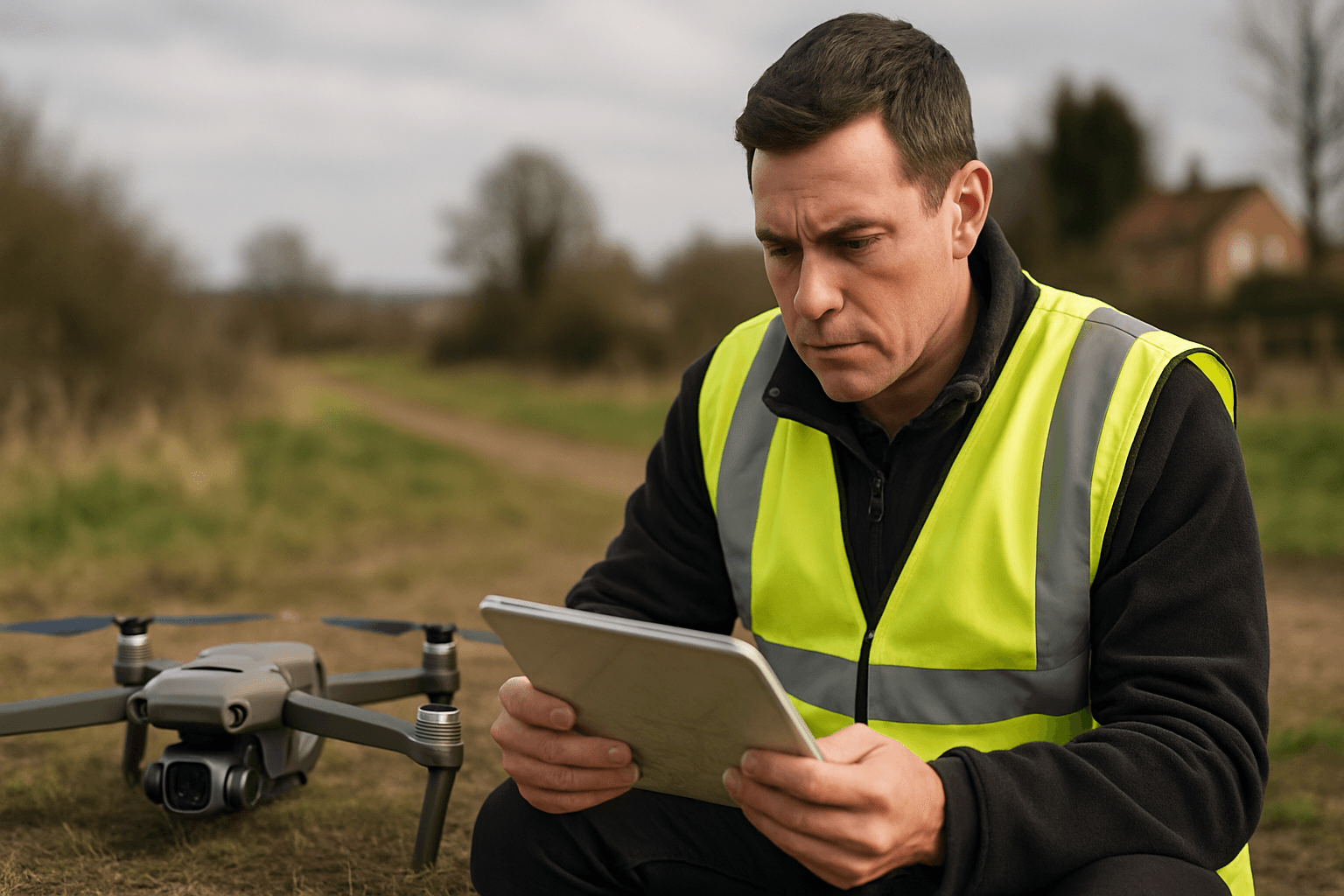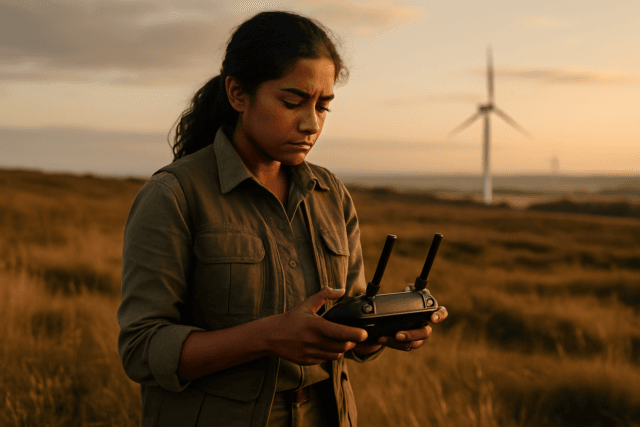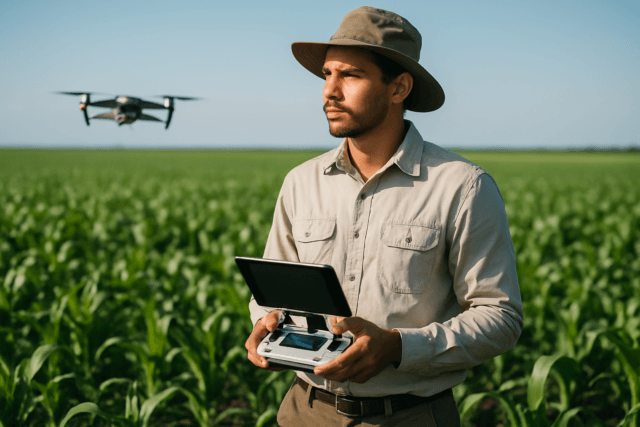Drones have become increasingly popular for both recreational and commercial use, offering a unique aerial perspective and a wide range of applications. However, safe and legal drone operation requires careful flight planning and adherence to regulations. This guide provides a comprehensive overview of drone flight planning, focusing on UK regulations and best practices, to ensure every flight is safe, compliant, and successful.
Why is Drone Flight Planning Important?
Meticulous drone flight planning is essential for several reasons:
- Safety: Identifying potential hazards and obstacles before they occur minimizes the risk of accidents and keeps operations running smoothly.
- Compliance: Following regulations and obtaining necessary permits avoids fines and legal issues.
- Efficiency: Well-designed flight paths save time and battery life, reducing operational costs.
- Data Quality: Detailed flight plans ensure proper image overlap and camera settings for mapping, surveys, or inspections.
- Professionalism: Demonstrating a commitment to best practices enhances credibility with clients and partners.
UK Drone Regulations: A Summary
The UK Civil Aviation Authority (CAA) has implemented a comprehensive set of drone laws to promote safe and responsible drone operations. Key regulations include:
- Registration: Drones weighing 250g or more must be registered with the CAA.
- Flyer ID: Drone pilots must pass a basic online safety test to obtain a flyer ID.
- Altitude Limit: Drones cannot be flown higher than 400 feet (120 meters).
- Visual Line of Sight (VLOS): Operators must maintain a clear line of sight with their drone at all times.
- Restricted Airspace: Permission is required to fly in restricted airspace, such as near airports.
- Distance from People: Drones must be operated at least 50 meters away from crowds and 150 meters away from built-up areas.
Step-by-Step Drone Flight Planning Checklist
Here’s a detailed checklist to guide you through the drone flight planning process:
1. Pre-Flight Assessment & Preparation
- Pilot fitness: Ensure the pilot is fit and safe to fly, not under the influence of alcohol, drugs, or medication, and not fatigued or unwell.
- Drone category: Determine which category your drone falls under (Open, Specific, or Certified) as rules vary depending on the category.
- Required documentation: Ensure you have all necessary documentation, including your operator ID, flyer ID, and insurance (if flying commercially).
- Check Firmware: Ensure that your drone’s built-in software is up to date.
2. Location Assessment & Airspace Check
- No-fly zones: Identify no-fly zones and hazards using drone safety apps like Drone Assist, Drone Scene or No Fly Drones.
- Airspace restrictions: Check for airspace restrictions, temporary flight restrictions (TFRs), and NOTAMs (Notices to Airmen).
- Geozone Awareness: Be aware of the geo-awareness function of your drone, which detects potential breaches of airspace limitations.
- Permission: Obtain permission to fly in restricted airspace from the relevant air traffic control unit or airfield operator.
- Landowner permission: Seek permission from the landowner to take off and land the drone, especially for commercial filming activity.
- Publicly Accessible Lands: Consider flying in publicly accessible lands such as those covered by the Countryside and Rights of Way (CRoW) Act.
3. Environmental Conditions
- Weather forecast: Assess the weather forecast for wind speed, visibility, and precipitation.
- Wind resistance: Check the manufacturer’s maximum wind resistance for your drone.
- Temperature: Note the weather and temperature.
- Environmental impact: Consider the environmental impact of your flight, including noise pollution and disturbance to wildlife.
4. Risk Assessment
- Identify hazards: Identify potential hazards such as buildings, power lines, trees, and people.
- Assess risks: Assess the risks associated with each hazard and implement appropriate mitigation measures.
- Emergency procedures: Establish clear emergency procedures in case of a malfunction or accident.
- Safety kit: Assemble a safety kit including an anemometer, hi-viz vest, hard hat, safety goggles, and safety cones.
5. Drone Inspection & Maintenance
- Pre-flight checklist: Use a pre-flight checklist to ensure your drone is in optimal condition.
- Battery check: Ensure the drone’s battery is fully charged and securely connected.
- Propeller check: Check propellers for damage, cracks, and secure attachment.
- Equipment check: Check for cracks and structural defects, loose or defective wiring, and damage to solders and plugs.
- Camera settings: Undertake a range test and check your camera settings before you fly.
- Secure equipment: Make sure any equipment is secure and that you do not go over the maximum take-off mass (MTOM).
- Dangerous cargo: Never carry any dangerous cargo on your drone.
6. Flight Planning & Execution
- Mission objectives: Clearly define your mission objectives and desired outcomes.
- Flight path: Plan your flight path, considering altitude limits, distance from people, and airspace restrictions.
- Take-off and Landing sites: Plan safe and legal take-off and landing sites.
- Visual line of sight: Ensure you can maintain visual line of sight with your drone throughout the flight.
- Altitude limits: Adhere to the CAA’s regulations, which include not flying your drone higher than 400 feet above the surface.
- Communicate intentions: Use the ‘Fly Now’ feature on apps like Drone Assist to share your drone flight location with other app users.
- Fly responsibly: Don’t endanger anyone or anything while flying a drone.
7. Post-Flight Procedures
- Landing area: Choose a landing area clear of people and obstacles.
- Inspection: Inspect the drone for any damage after the flight.
- Data management: Download and back up any data collected during the flight.
- Flight log: Record details of the flight in a flight log, including flight time, location, and any incidents.
- Maintenance: Perform any necessary maintenance or repairs.
Useful Apps and Software for Drone Flight Planning
Several apps and software solutions can assist with drone flight planning:
- Drone Assist (Altitude Angel): A leading drone safety app with interactive maps, no-fly zones, and ground hazards.
- Drone Scene: Provides drone operators with a map to find and share great places to fly, overlaid with data on ground hazards and airspace restrictions.
- No Fly Drones: A free tool showing no fly zones in the UK.
- AirMap: Offers real-time information on no-fly zones, special use airspace, and temporary flight restrictions. (Note: AirMap has closed down)
- Coverdrone FlySafe: A free app designed to help drone pilots plan and conduct their drone flights safely.
- UAV Forecast: Provides weather checks, which is a key consideration for drone pilots.
- Aloft (formerly Kittyhawk): Offers tools for airspace management, flight planning, and compliance.
- Litchi: A flight planning and control app.
- DJI Go: Essential for managing DJI drones, with a user-friendly interface and live camera view.
- DroneDeploy: Automates data processing and offers intuitive mapping and automation for flight planning.
- Dronedesk: An all-in-one platform that simplifies flight planning, operational compliance, and client management.
- Site Scan for ArcGIS (Esri UK): End-to-end cloud-based drone mapping software designed to revolutionize imagery collection, processing, and analysis.
- ArcGIS Drone2Map (Esri UK): A desktop application that allows users to process and analyze their drone data offline and in the field.
- GuardianUTM (Altitude Angel): A scalable cloud-based platform for effortlessly managing and approving drone operations across various airspace and land management needs.
Key Considerations for Safe Drone Flight
- Stay informed: Keep up-to-date with the latest drone laws and regulations.
- Respect privacy: Avoid flying over private properties or gardens without permission.
- Maintain situational awareness: Be aware of your surroundings and potential hazards.
- Fly responsibly: Operate your drone in a safe and responsible manner, respecting the safety and privacy of others.
Conclusion
Drone flight planning is a critical aspect of safe and legal drone operations. By following this comprehensive checklist and staying informed about UK drone regulations, drone pilots can minimize risks, ensure compliance, and maximize the benefits of this exciting technology. Remember to always prioritize safety and respect the airspace and the community around you.





